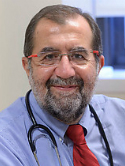| Abstract: |
This Center for International Blood and Marrow Transplant Research report describes the use of hematopoietic stem cell transplantation (HSCT) in pediatric patients with cancer, 4408 undergoing allogeneic (allo) and3076 undergoing autologous (auto) HSCT in the United States between 2008 and 2014. In both settings, there was a greater proportion of boys (n = 4327; 57%), children < 10 years of age (n = 4412; 59%), whites (n = 5787; 77%), and children with a performance score ≥ 90% at HSCT (n = 6187; 83%). Leukemia was the most common indication for an allo-transplant (n = 4170; 94%), and among these, acute lymphoblastic leukemia in second complete remission (n = 829; 20%) and acute myeloid leukemia in first complete remission (n = 800; 19%) werethe most common. The most frequently used donor relation, stem cell sources, and HLA match were unrelated donor (n = 2933; 67%), bone marrow (n = 2378; 54%), and matched at 8/8 HLA antigens (n = 1098; 37%) respectively. Most allo-transplants used myeloablative conditioning (n = 4070; 92%) and calcineurin inhibitors and methotrexate (n = 2245; 51%) for acute graft-versus-host disease prophylaxis. Neuroblastoma was the most common primary neoplasm for an auto-transplant (n = 1338; 44%). Tandem auto-transplants for neuroblastoma declined after 2012 (40% in 2011, 25% in 2012, and 8% in 2014), whereas tandem auto-transplants increased for brain tumors (57% in 2008 and 77% in 2014). Allo-transplants from relatives other than HLA-identical siblings doubled between 2008 and 2014 (3% in 2008 and 6% in 2014). These trends will be monitored in future reports of transplant practices in the United States. © 2017 The American Society for Blood and Marrow Transplantation |




